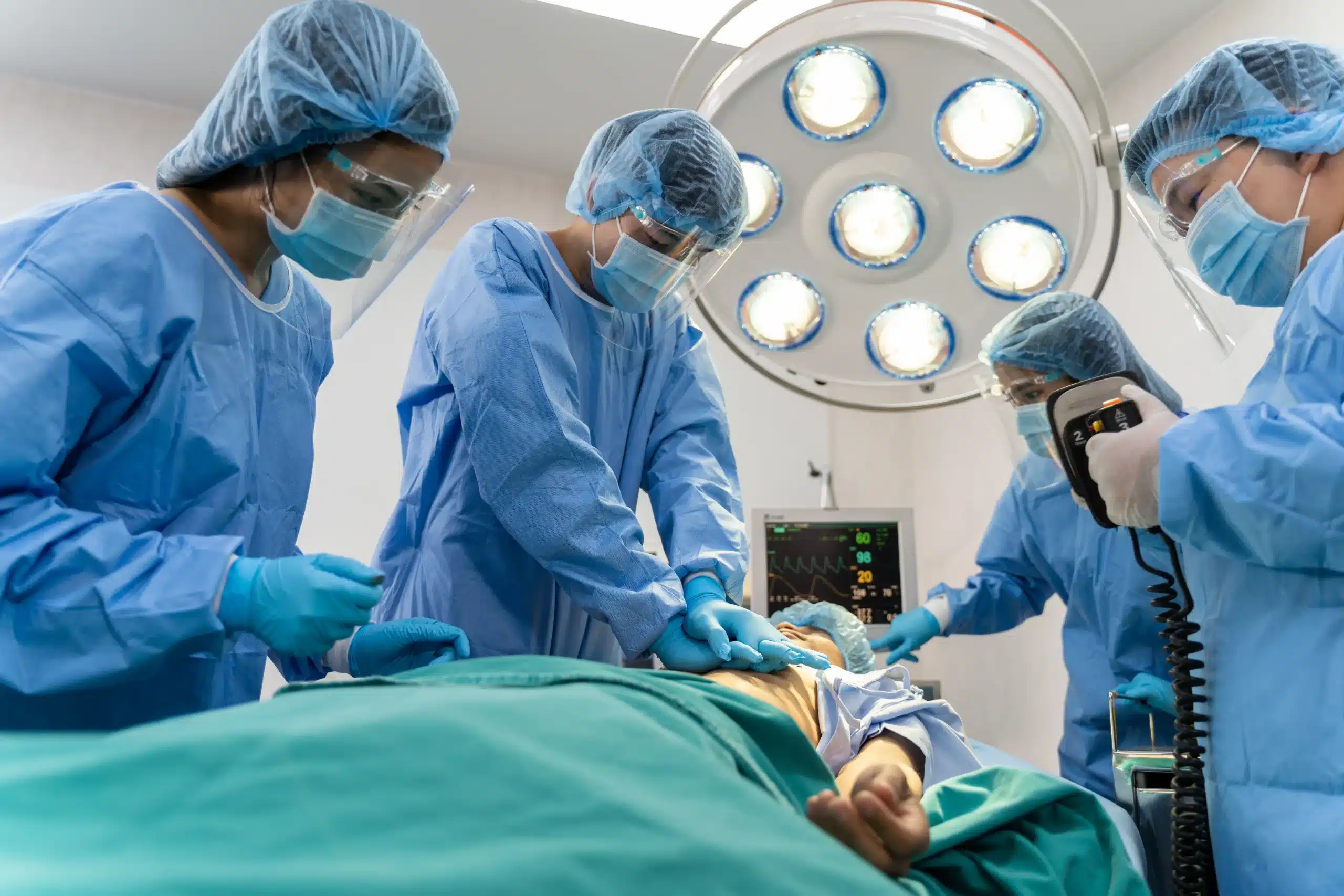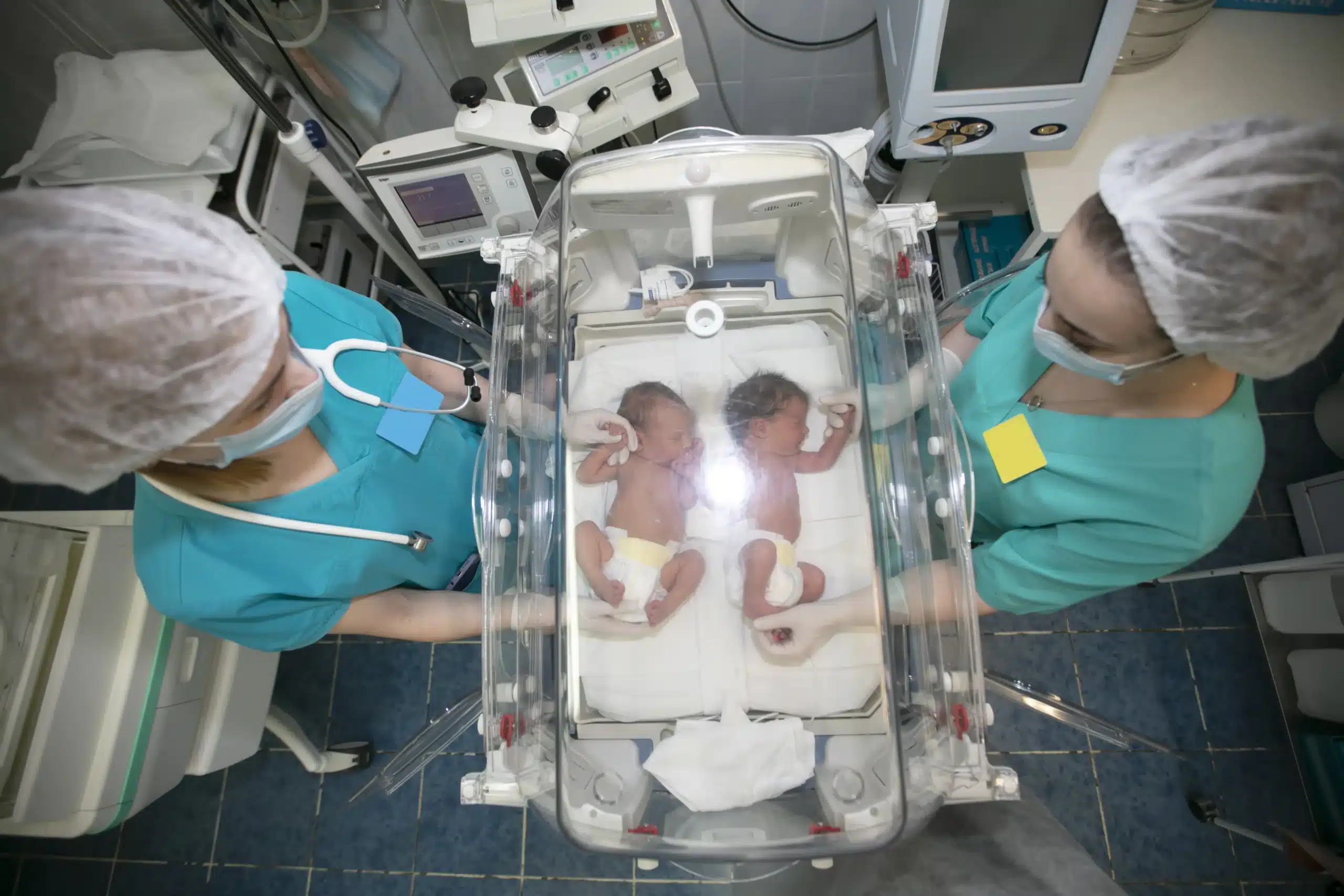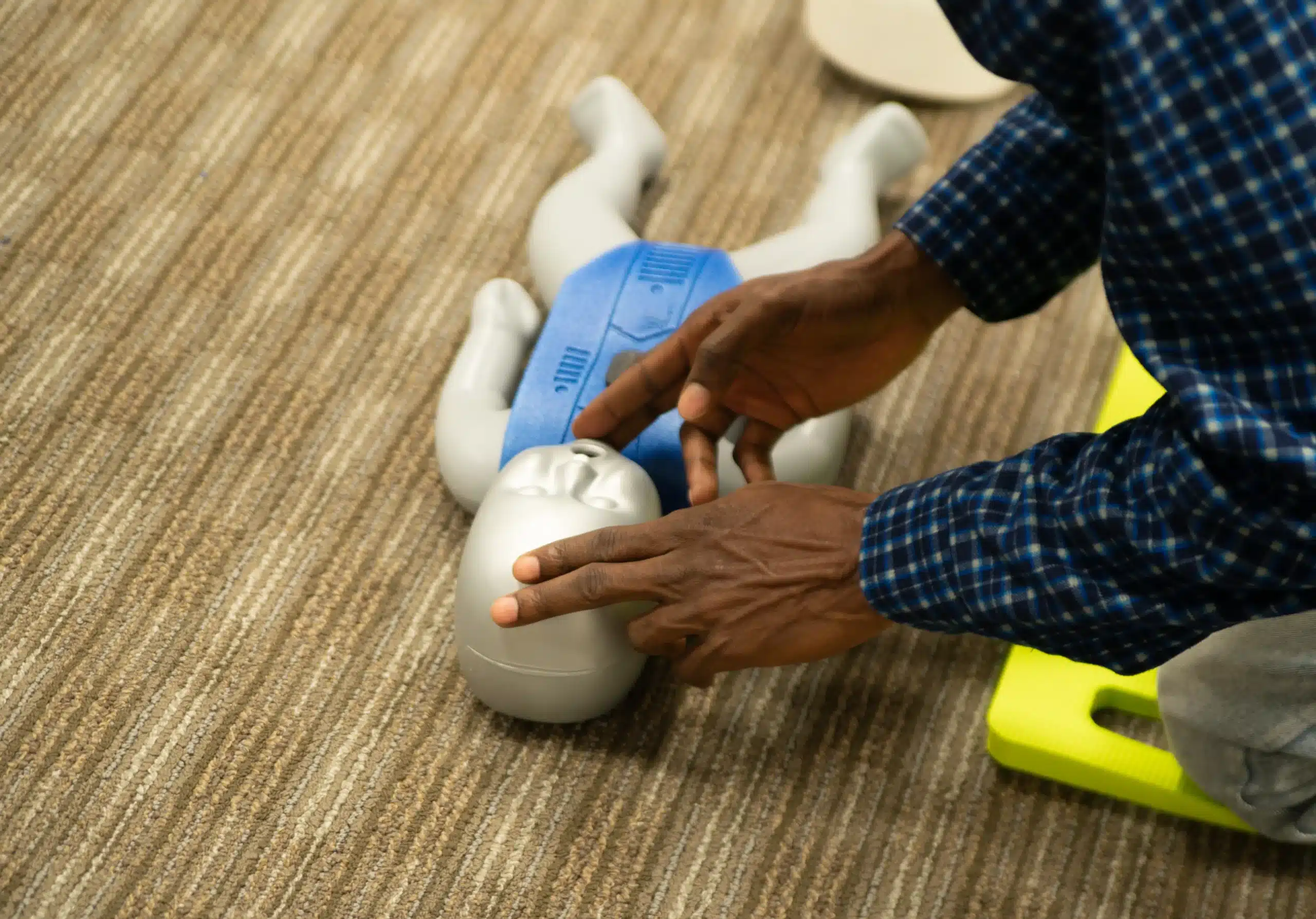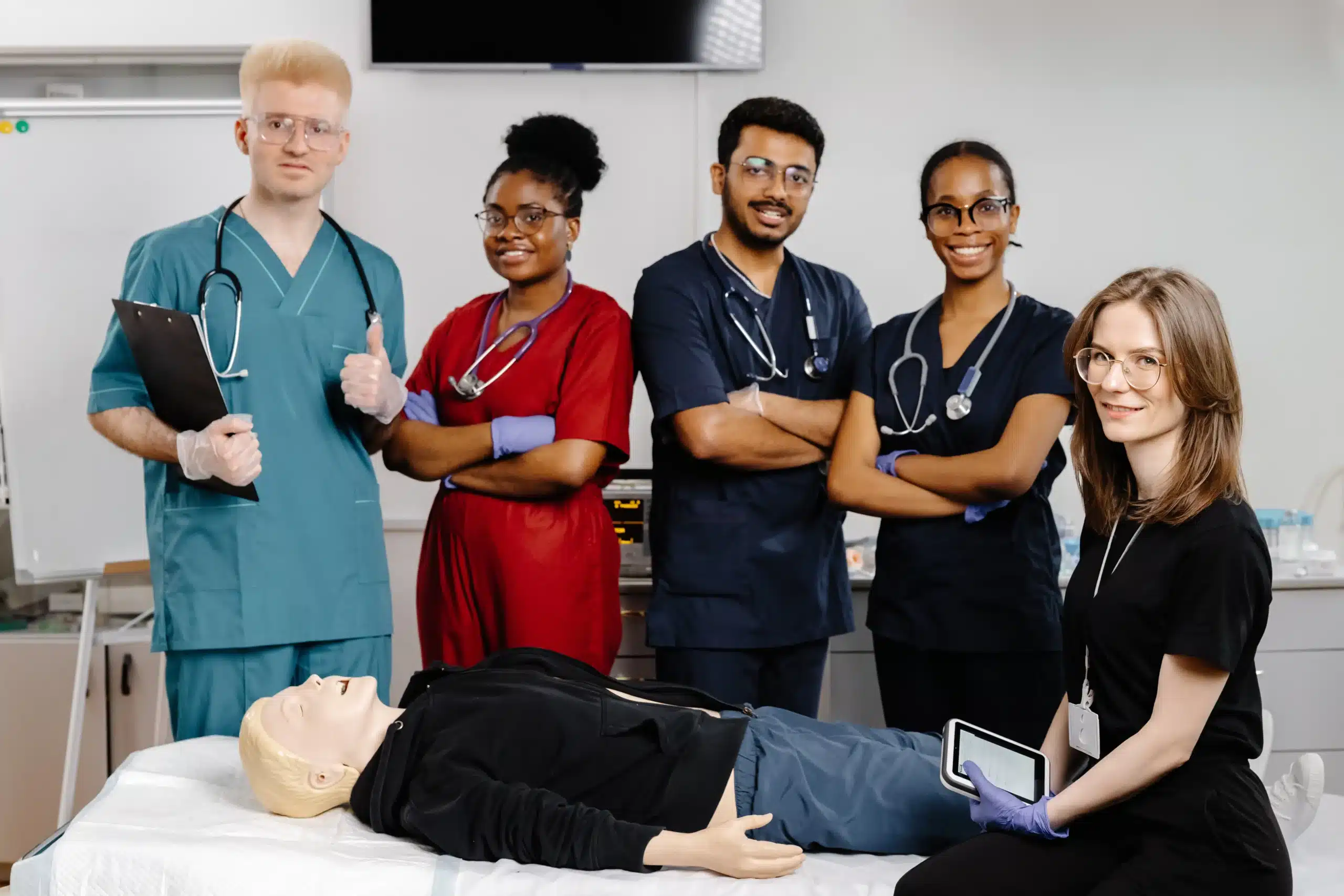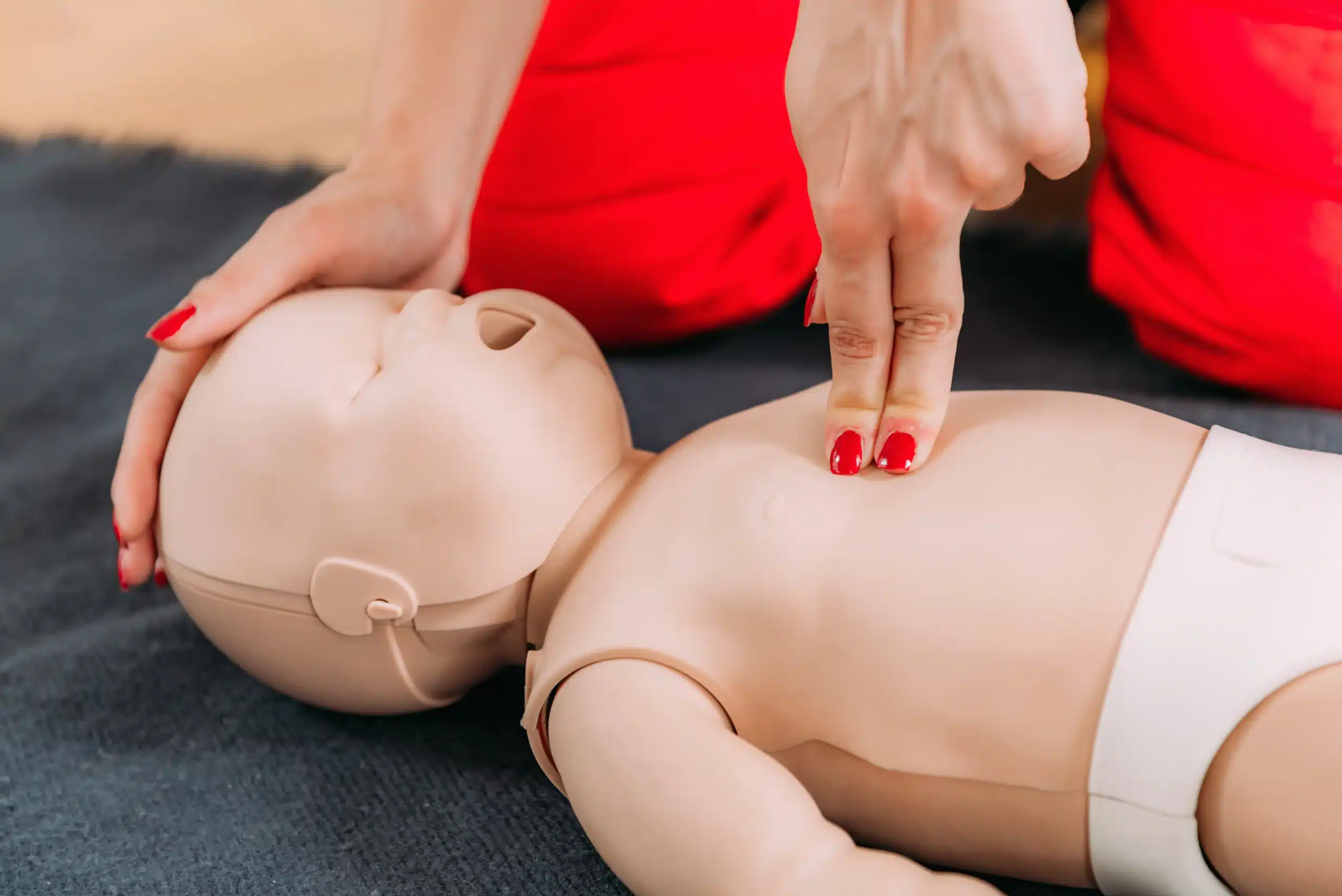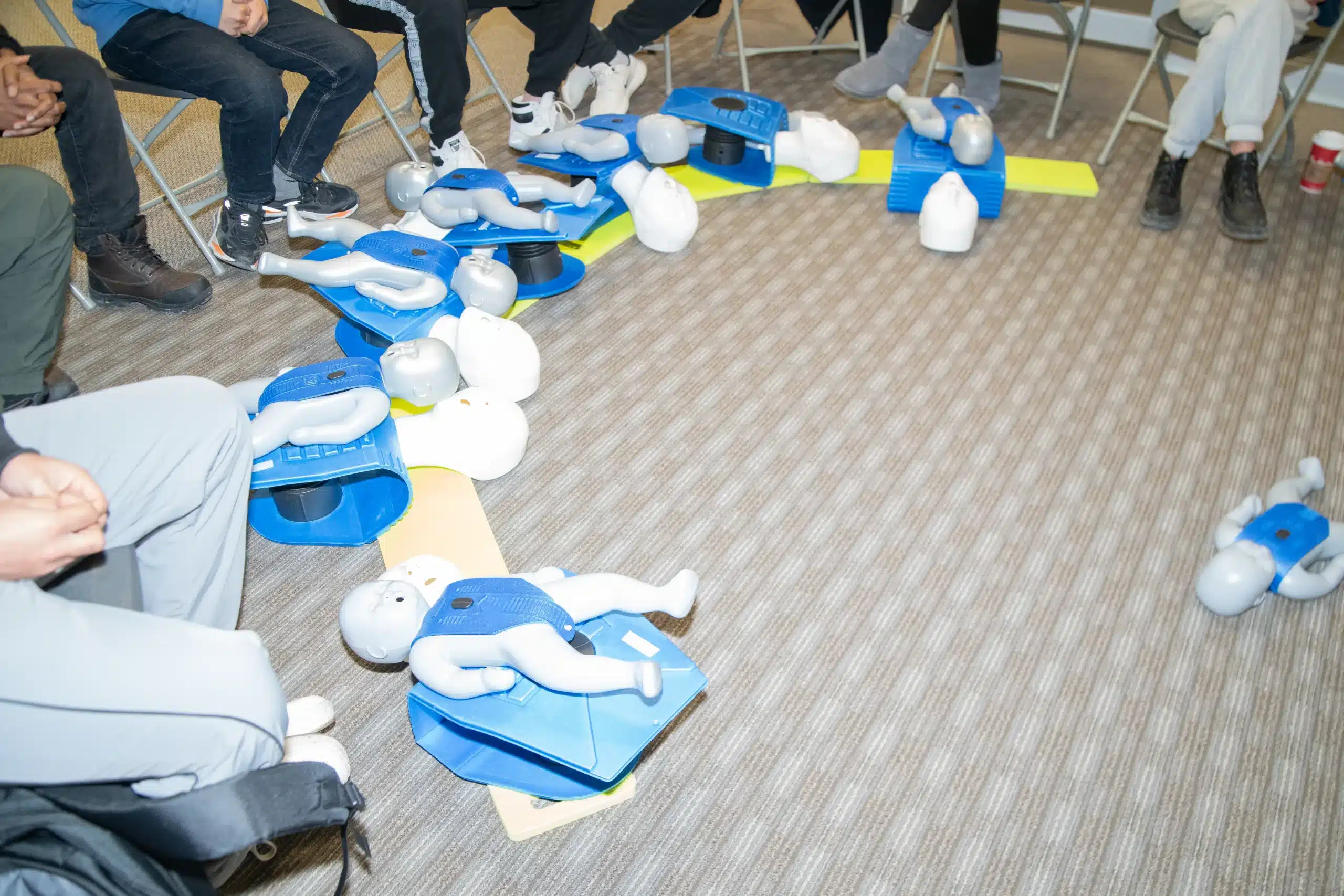In a medical emergency, seconds can matter. Having the skills to provide immediate care can significantly impact the outcome. Basic Life Support (BLS) certification equips you with the knowledge and confidence to respond effectively in such situations. This comprehensive guide covers everything from understanding the importance of BLS to finding the right training program, including convenient BLS classes near me. Whether you’re a healthcare provider or simply want to be prepared for any situation, this guide will help you understand the value of BLS certification and how to get started.
Key Takeaways
- BLS certification empowers you to save lives: It goes beyond basic CPR, equipping you with the skills to handle a wider range of medical emergencies. This training is valuable for healthcare providers and anyone who wants to be prepared.
- Choose the BLS learning format that fits your life: From traditional in-person classes to flexible online and blended learning options, you can find a BLS course that suits your schedule, learning style, and budget.
- Affordable, high-quality BLS training is within reach: Safety Training Seminars offers convenient courses in the San Francisco Bay Area with a low price guarantee, making essential life-saving skills accessible to everyone.
What is BLS Certification & Why Do You Need It?
Basic Life Support (BLS) certification equips you with the skills to respond to life-threatening emergencies. It’s especially crucial for healthcare providers and first responders, but valuable for anyone who wants to be prepared. BLS goes beyond basic CPR, covering a wider range of situations and techniques. Holding a BLS certification demonstrates your ability to provide critical care during those initial, crucial moments of an emergency.
BLS Training: Skills You’ll Learn
BLS courses cover essential skills like CPR, using an AED, and providing first aid. You’ll also develop crucial soft skills, like critical thinking, problem-solving, communication, and teamwork—all vital in high-pressure situations. You’ll learn how to assess a scene for safety, make quick decisions, and work effectively with others to deliver the best possible care. The training often uses real-life emergency scenarios, like simulated cardiac arrests, to give you practical experience with chest compressions, rescue breaths, and AED use.
Why BLS Matters for Healthcare Professionals & First Responders
BLS is a more advanced certification than standard CPR training, designed specifically for healthcare professionals like doctors, nurses, and EMTs. It includes everything covered in CPR training, plus advanced techniques for managing cardiac arrest, respiratory distress, and airway obstructions. These advanced skills are essential for anyone working in a healthcare setting. BLS certification ensures they can provide a high level of care during emergencies. The American Red Cross offers a helpful comparison of BLS and CPR certification.
Common BLS Certification Myths
One common misconception is that you can get AHA BLS certification entirely online. While some coursework may be available online, the American Heart Association (AHA) requires an in-person skills assessment. This hands-on component ensures you can perform the necessary skills correctly and confidently. So, while online resources can be helpful for studying, you’ll still need to demonstrate your skills in person. Your BLS certification will be valid for two years, after which you’ll need a renewal course.
Find BLS Classes Near You
So, you’re ready to get your BLS certification—great! Finding the right class involves a few key steps. Let’s explore your options.
Local BLS Training Resources
Start by checking with hospitals, community centers, and local fire departments. Many offer BLS certification courses open to the public. A quick online search is a good starting point. For example, the American Red Cross frequently hosts classes at various locations.
Online & Blended Learning Options
If you need a more flexible schedule, consider online or blended learning. The Red Cross offers blended learning (combining online coursework with in-person skills practice). Fully online options are also available from various providers, making BLS certification accessible regardless of location.
BLS Courses in San Francisco with Safety Training Seminars
For those in the San Francisco Bay Area, Safety Training Seminars offers BLS courses for both healthcare providers and the general public. Our classes are held in San Francisco (Nob Hill), conveniently located for those in San Francisco, Daly City, San Mateo, and Oakland, CA. Find a date that works for you on our BLS course schedule. We also offer ACLS and PALS courses at the same location. Need NRP certification? We offer those courses in Concord or San Francisco.
Top BLS Certification Providers
Several reputable organizations offer BLS certification. Here are a few:
American Heart Association
The AHA provides various BLS course options, including classroom courses, blended learning (HeartCode BLS), and online materials.
American Red Cross
The American Red Cross is a trusted provider of BLS certification, offering different course formats.
National CPR Foundation
The National CPR Foundation offers BLS certification for both healthcare professionals and the general public.
ProTrainings
ProTrainings specializes in online BLS certification, allowing for convenient, self-paced learning.
Safety Training Seminars
Safety Training Seminars offers comprehensive BLS training, including hands-on skills practice and certification. We’re committed to excellent customer service and offer a low price guarantee.
Choose the Right BLS Class Format
Finding the right BLS class format depends on your learning style, schedule, and budget. Let’s break down the pros and cons of each option so you can make the best choice.
In-Person Training: Get Hands-On Experience
In-person BLS training gives you that essential hands-on experience, allowing you to practice techniques like CPR and AED use in a safe environment. You’ll receive immediate feedback from a certified instructor, which is invaluable for mastering these skills. The American Red Cross offers in-person BLS certification and renewal courses, typically lasting between 2.5 and 4.5 hours. This format is great for people who learn best through direct interaction and practice.
Online Learning: Flexibility & Convenience
If you need flexibility, online learning might be a good fit. Platforms like MyCPR NOW offer online BLS certification, letting you learn at your own pace, often at a lower cost. You’ll have access to digital resources and online exams, making it easy to fit the training into your schedule. Keep in mind that online-only courses usually require a separate in-person skills session for full certification.
Blended Learning: The Best of Both Worlds
Blended learning combines online convenience with hands-on training. You’ll complete the coursework online at your own speed, then attend a shorter in-person session to practice and demonstrate your skills. The American Heart Association offers this blended learning format (HeartCode BLS), giving you the flexibility to learn online and then solidify your skills with an instructor.
Time Commitment & Scheduling
No matter the format, consider the time commitment. BLS certification is usually valid for two years, then you’ll need a renewal course. Instructor-led courses generally take 4-5 hours, while blended learning involves 1-2 hours online plus a 2-3 hour in-person skills session. Factor in travel time for in-person sessions and plan accordingly.
What Happens in a BLS Class?
Curious about what goes on in a BLS course? It’s a mix of important information and hands-on practice, getting you ready to handle medical emergencies. Here’s a closer look:
Course Content & Skills
BLS classes teach a variety of life-saving techniques. You’ll learn adult, child, and infant CPR, proper use of an automated external defibrillator (AED), and how to help someone who is choking. Beyond the basics, the course covers scene safety, critical thinking, problem-solving, communication, and teamwork during emergencies. You’ll also learn about legal aspects of providing care.
Hands-On Practice & Skills Assessment
BLS courses emphasize practical experience. In-person classes offer a traditional setting with hands-on practice using mannequins and training equipment to mimic real-life situations. If you choose a blended learning format, the in-person skills assessment ensures you can confidently perform everything you’ve learned.
Certification Process & Validity
Once you complete the course and skills check, you’ll receive your BLS certification, valid for two years. This is a must-have for healthcare professionals and many others, proving your skills and showing you’re prepared for emergencies.
Renewal & Continuing Education
To keep your BLS certification current, you’ll need a renewal course every two years. This keeps your skills sharp and ensures you’re following the latest guidelines. Organizations like the American Red Cross offer continuing education to help you stay on top of best practices in life support.
BLS Class Costs & Accessibility
Finding the right BLS certification course often involves balancing quality training with affordability and convenience. Let’s break down the costs you might expect, explore ways to save, and highlight what makes Safety Training Seminars a valuable option.
Average BLS Certification Costs
BLS certification costs vary based on the training provider, course format (online, in-person, or blended), and your location. Generally, online BLS courses tend to be more budget-friendly than traditional classroom courses. In-person courses typically range from $70 to $100, sometimes more depending on the provider and included materials.
Discounts, Group Rates, & Financial Aid
Many organizations offer discounts for students, military personnel, or groups. It’s always worth asking about potential discounts when you register. Some training centers may also offer financial aid or payment plans, so if cost is a barrier, don’t hesitate to reach out to your chosen provider. The American Heart Association offers various course options, including full classroom courses, blended learning (a mix of online and in-person training), and à la carte materials, allowing you to tailor your learning to your budget.
Safety Training Seminars’ Low Price Guarantee
Safety Training Seminars is committed to providing high-quality BLS training at competitive prices. We understand that cost can be a deciding factor, so we offer a low price guarantee. If you find a comparable BLS course in the San Francisco area at a lower price, we’ll match it. We believe that everyone should have access to life-saving training, and we strive to make our courses as accessible as possible. Our San Francisco location offers BLS certification courses daily.
Choosing a Provider: Factors to Consider
Beyond cost, consider the course format, location, and schedule. Think about what works best for your learning style and availability. Do you prefer hands-on, in-person instruction, or does the flexibility of online learning appeal to you? Providers like the Red Cross offer both in-person training and blended learning programs, giving you options to fit your needs. Also, consider the provider’s reputation and accreditation. Ensure your chosen provider is reputable and offers certification recognized by your employer or licensing board.
Related Articles
- Basic Life Support (BLS) Classes in San Francisco – San Francisco CPR Classes
- BLS Certification in San Francisco: The Complete Guide – San Francisco CPR Classes
- BLS for Healthcare Providers in SF: A Practical Guide – San Francisco CPR Classes
- BLS Courses San Francisco: Your Complete Guide – San Francisco CPR Classes
Frequently Asked Questions
How long does BLS certification last, and how do I renew it? BLS certification is typically valid for two years. Renewal involves taking another BLS course before your current certification expires. Check with your certifying organization for specific renewal requirements and available courses.
What’s the difference between BLS and CPR certification? BLS certification builds upon the foundation of CPR. It includes CPR techniques but also covers a broader range of skills, such as using an AED, managing choking, and providing basic life support in various situations. BLS training often emphasizes teamwork and communication, preparing you for real-world medical emergencies.
Can I get BLS certified completely online? While some portions of BLS training might be available online, the certification process usually requires an in-person skills assessment. This practical component ensures you can correctly perform essential techniques like CPR and using an AED. Check with your chosen provider for their specific requirements.
How much does a BLS certification course cost? Costs vary depending on the training provider, location, and course format (online, in-person, or blended). Online courses are often more affordable, while in-person training may offer more hands-on practice. Look for potential discounts or group rates, and don’t hesitate to ask providers about payment plans if needed.
Where can I find BLS classes near me? Several organizations offer BLS certification courses. Start by searching online for local providers, checking with hospitals, community centers, and fire departments. The American Heart Association and the American Red Cross are excellent resources for finding certified training centers in your area.
